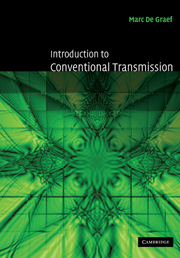Book contents
- Frontmatter
- Contents
- Preface
- Acknowledgements
- Figure reproductions
- 1 Basic crystallography
- 2 Basic quantum mechanics, Bragg's Law and other tools
- 3 The transmission electron microscope
- 4 Getting started
- 5 Dynamical electron scattering in perfect crystals
- 6 Two-beam theory in defect-free crystals
- 7 Systematic row and zone axis orientations
- 8 Defects in crystals
- 9 Electron diffraction patterns
- 10 Phase contrast microscopy
- Appendix A1 Explicit crystallographic equations
- Appendix A2 Physical constants
- Appendix A3 Space group encoding and other software
- Appendix A4 Point groups and space groups
- List of symbols
- Bibliography
- Index
3 - The transmission electron microscope
Published online by Cambridge University Press: 02 December 2009
- Frontmatter
- Contents
- Preface
- Acknowledgements
- Figure reproductions
- 1 Basic crystallography
- 2 Basic quantum mechanics, Bragg's Law and other tools
- 3 The transmission electron microscope
- 4 Getting started
- 5 Dynamical electron scattering in perfect crystals
- 6 Two-beam theory in defect-free crystals
- 7 Systematic row and zone axis orientations
- 8 Defects in crystals
- 9 Electron diffraction patterns
- 10 Phase contrast microscopy
- Appendix A1 Explicit crystallographic equations
- Appendix A2 Physical constants
- Appendix A3 Space group encoding and other software
- Appendix A4 Point groups and space groups
- List of symbols
- Bibliography
- Index
Summary
Introduction
In this chapter, we introduce the components of the transmission electron microscope. After a brief review of the history of the electron and the electron microscope, we will consider a cross-section of a real microscope (JEOL 120CX) and identify the various stages and components inside the column. We will discuss peripheral support systems (vacuum, compressed air, water cooling, etc.) without which the microscope could not possibly function. Then we focus our attention on the general properties of round magnetic lenses and discuss basic charged particle dynamics in magnetic fields. We will illustrate the behavior of electrons in a magnetic field by means of simplified paraxial trajectory simulations, and introduce the concept of cardinal elements of a lens. Then we will consider deviations from the paraxial behavior and introduce various lens aberrations of importance in electron microscopy. We conclude the section on magnetic lenses with a brief overview of multipole lenses, used as deflectors and correctors.
The electron gun is next, and we will introduce the basic gun types and their operational parameters, along with a discussion of beam properties (current, brightness, coherence, etc.). In the remainder of the chapter, we break the microscope column down into four regions: the illumination system, the goniometer stage and objective lens, the imaging stage, and the detector stage. For each stage, we will describe the common components, why they are present, and how the microscope operator can affect their behavior. In particular, we will relate the geometry of the goniometer stage to reciprocal space and Bragg's Law. We will conclude this chapter with a brief review of electron detection systems.
- Type
- Chapter
- Information
- Introduction to Conventional Transmission Electron Microscopy , pp. 136 - 234Publisher: Cambridge University PressPrint publication year: 2003
- 2
- Cited by



